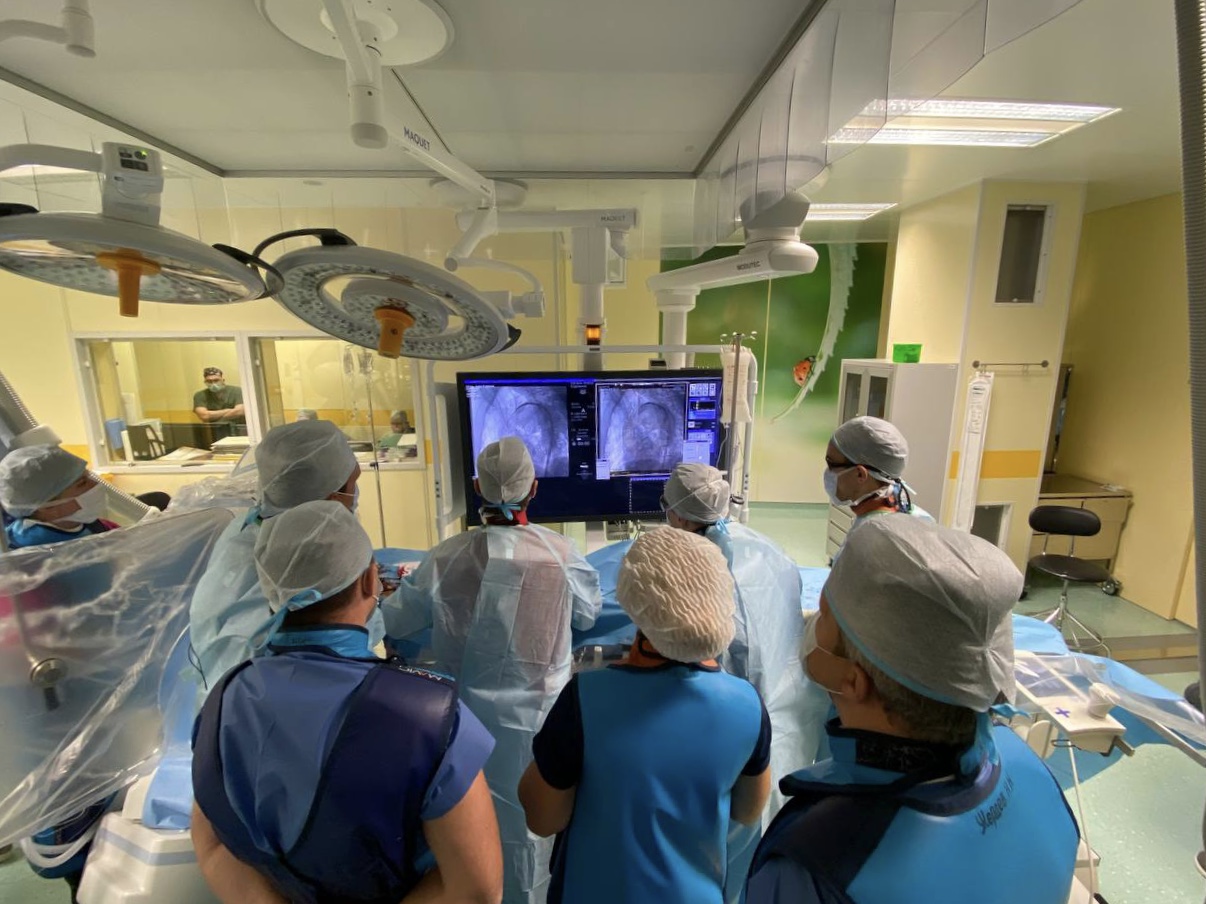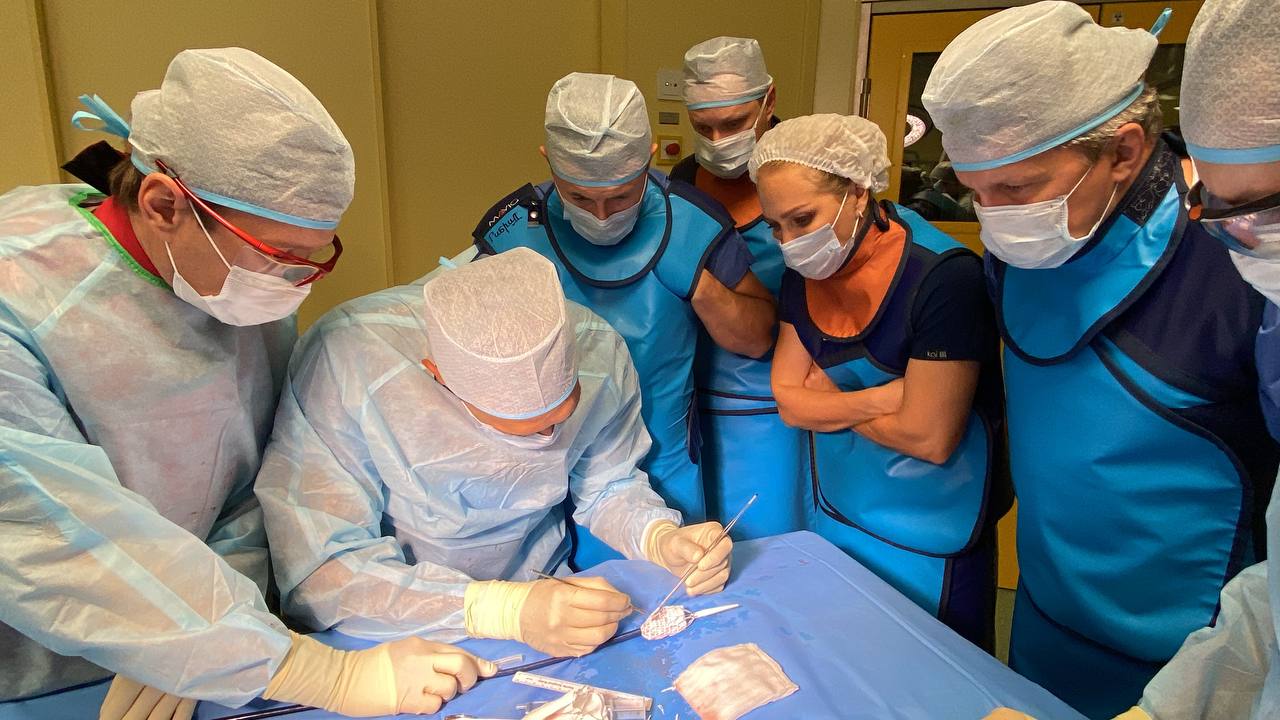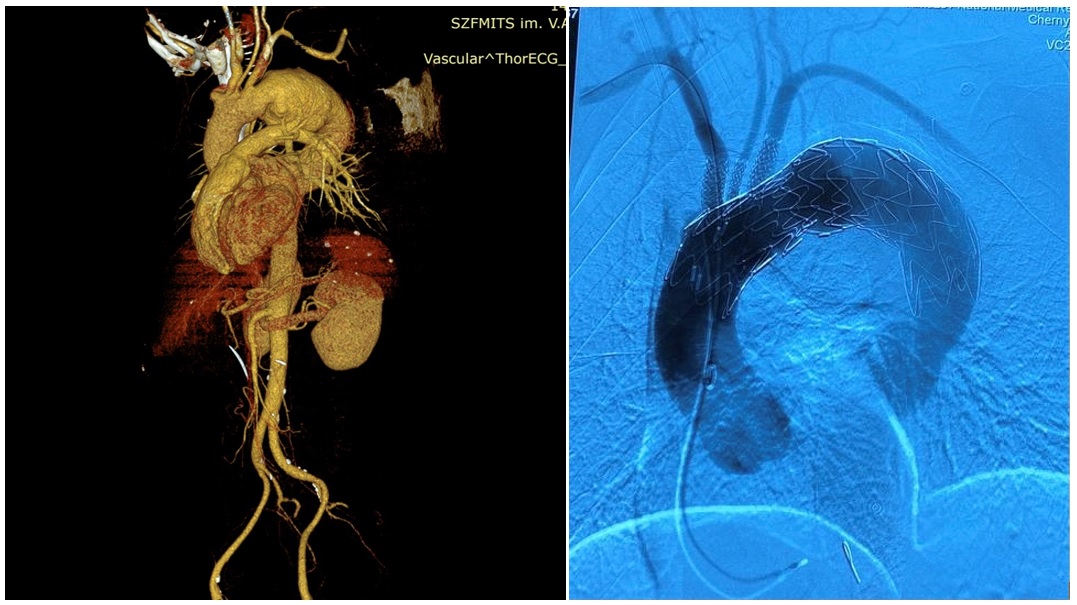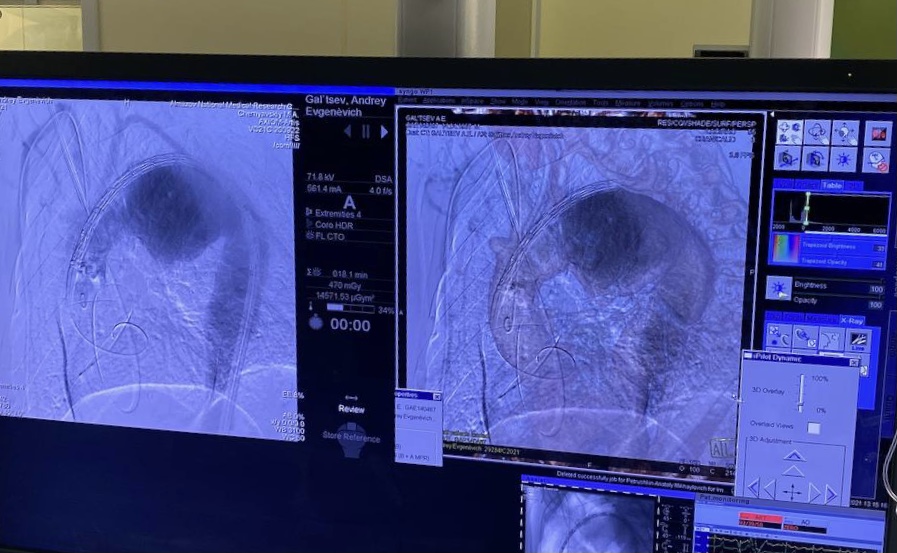
Even 5 years ago, such surgical method seemed impossible and only open surgery was an option. Today, this method of surgical treatment has become a breakthrough in cardiovascular surgery with the support of Director General Evgeny Shlyakhto and the executives of the Centre in the development and promotion of innovations in medicine. Endovascular technologies continue to develop and have reached such a level that makes it possible to perform the most complex cardiac surgery in a minimally invasive manner. Specialists of the Vascular Surgery Clinic of Almazov Centre achieved a previously unattainable milestone in endovascular surgery – the treatment of an aortic arch aneurysm.

The master class on endovascular treatment of aortic arch disease brought together leading specialists from different regions of the country willing to watch the unique surgery for endovascular aortic arch repair with intraoperative fenestration of a stent graft at the ostia of brachiocephalic arteries with their subsequent endovascular repair. Such surgery imposes an immense responsibility for a patient’s life because the slightest inaccuracy of calculations before and during the surgery can lead to incorrect implantation of the stent graft. The procedures were performed by a joint team of clinic specialists headed by Chief of the Research Department of Vascular and Interventional Surgery Dr. Mikhail Chernyavsky, with the participation of Head of the Department for X-Ray Endovascular Diagnostic and Treatment Methods Timur Khafizov (Ufa).

Both patients were men with severe cardiac comorbidities and an aortic arch aneurysm measuring about 9 cm in diameter. The impossibility of open reconstruction in these patients led to the need to search for an alternative safe option. In such cases, endovascular repair offers possibilities that open surgery cannot offer.

The patients were successfully operated on thanks to a well-coordinated teamwork of vascular surgeons, anesthesiologists and scrub nurses. Both procedures were performed through two small incisions in the thigh and neck, which significantly reduces the duration of a procedure and the risk of intra- and postoperative complications. Currently, the condition of both patients is stable, within a day they were transferred from the ICU to the cardiology department for further treatment.
